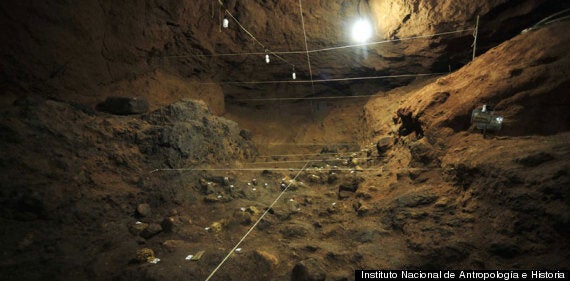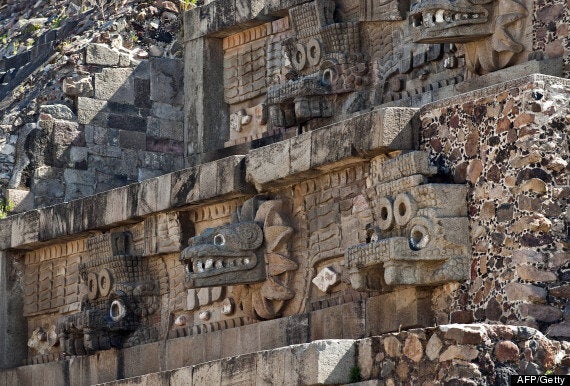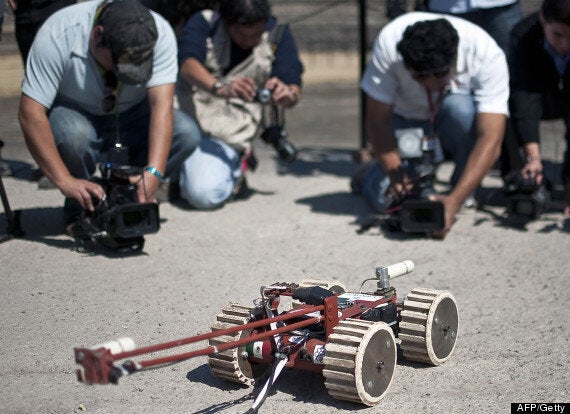Hundreds of mysterious yellow orbs have been found beneath Mexico’s Temple of the Feathered Serpent.
The once-metallic spheres were discovered by a robot named Tláloc II-TC, which was deployed by archaeologists exploring a tunnel and series of chambers beneath the ancient ruins.
Jorge Zavala, an archaeologist with Mexico’s National Anthropology and History Unit told NBCNews Science: “They look like yellow spheres, but we do not know their meaning. It’s an unprecedented discovery.”

Tabs show the locations of the mysterious yellow spheres
The balls range from 1.5 to 5 inches in circumference, have a core of clay and are covered with a yellow material called jarosite.
Remote-controlled Tláloc II-TC (who is named after Mexico's ancient god of rain) is three-feet-long and can squeeze through tight spaces where human beings would otherwise be unable to explore.
The 77lb machine ran into some difficulties on its mission, having to contend with getting its tires stuck in thick mud, Sergio Gomez, lead archaeologist said in a report published by the Mexican newspaper El Universal.

The Temple of the Feathered Serpent at Teotihuacan
"In some sections the depth of the sludge was 20 to 30 centimeters," said Hugo Armando Guerra, an engineer with HA Robotics company, in a translated statement.
Of the jarosite spheres, Gomez says: “This material is formed by the oxidation of pyrite, which is a metallic ore. It means that in pre-hispanic times they appeared as if they were metallic spheres. There are hundreds of these in the south chamber.”
The temple is located in the Mesoamerican ruins of Teotihuacan, which is located 30 miles from Mexico City.

Tlaloc II-TC has been assisting in the investigation of the 2,000 year old tunnel
According to Wired, several of the rooms in the tunnel are thought to have been used by Teotihuacan royalty for rituals and burials - pointing to the possibility the orbs may related to ceremonial procedures.
In the 1980s, the remains of over 200 warriors were discovered at the core of the temple, which is also known as the Temple of Quetzalcoatl.
SEE ALSO: Sirius UFO Documentary To Confirm Origin Of Six-Inch 'Space Alien' Atacama Humanoid (PICTURES)
Teotihuacan, thought to have been established around 100 BC, had more than 100,000 inhabitants at its peak, but was mysteriously abandoned in 700AD.
It was not inhabited again until the 1300s when the Aztecs arrived.